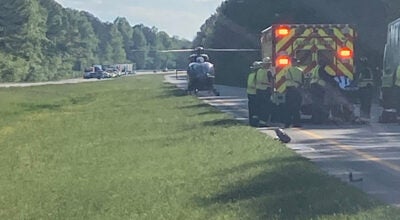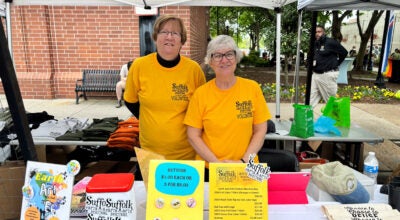Sewage release ‘catastrophic’
Published 10:03 pm Monday, November 5, 2012
The total raw sewage discharge from a break near Wilroy Road and Shingle Creek approached 15 million gallons on Monday as crews scrambled to bypass the damaged portion of concrete pipe.
A volunteer on the Nansemond River Preservation Alliance’s water quality committee said the discharge has raised bacteria counts to “catastrophic” levels in the waterway.
At 10 a.m. Monday, the total amount discharged into Shingle Creek was estimated at 14.265 million gallons. The discharge continued at a rate of about 1,000 gallons per minute, which is needed to reduce the pressure at the point of repair, according to Hampton Roads Sanitation District spokeswoman Nancy Munnikhuysen.
That is a much slower discharge rate than was occurring before the leak was discovered, she said. A contractor working at the site hopes to install a bypass of the pipe by Friday, thus stopping the discharge. Complete repairs will take about a month.
“The crews made good progress this weekend on assembling the bypass piping and preparing for the line stops,” Munnikhuysen wrote in an email. “We have been able to greatly reduce the discharge through innovative efforts in this difficult location.”
The 9-inch hole in the 30-inch concrete pipe was discovered Oct. 29. HRSD believes Hurricane Sandy was a contributing factor in the cause of the break.
Nick Worth, chairman of the Nansemond River Preservation Alliance’s water quality committee, said samples taken after the leak began show record highs in the amount of E. coli bacteria, nearly 10 times higher than the previous recorded highs in that location from 1985.
“It’s worse than the worst in the last 25 years,” Worth said. “We are really deeply disappointed something like this would happen right in our backyard.”
Worth said he has long wondered about the integrity of the concrete pipes in that location, which are transporting sewage to a treatment plant in North Suffolk. This episode, he said, should beg questions about the reliability of the entire system.
“What if there was a crack and it had been leaking all along?” he said. “I guess we’ll never know.”
Shingle Creek and the Nansemond River have long been deemed impaired by the Virginia Department of Environmental Quality. Swimming is even forbidden in some parts of the waterways.
Worth said HRSD and the health department made a good call in advising folks not to do recreational activities in the water. Worth went further, saying he would advise against eating fish and other seafood from the rivers.
“I would be hesitant to harvest shellfish right now, until I knew more,” Worth said.
The NRPA now is in a data-gathering mode and aims to be able to help the river get back to a healthy state, just as it has been doing since its inception.
“This is a top priority for us,” he said. “All sorts of good people working hard to try to clean the river up, and then this.”






